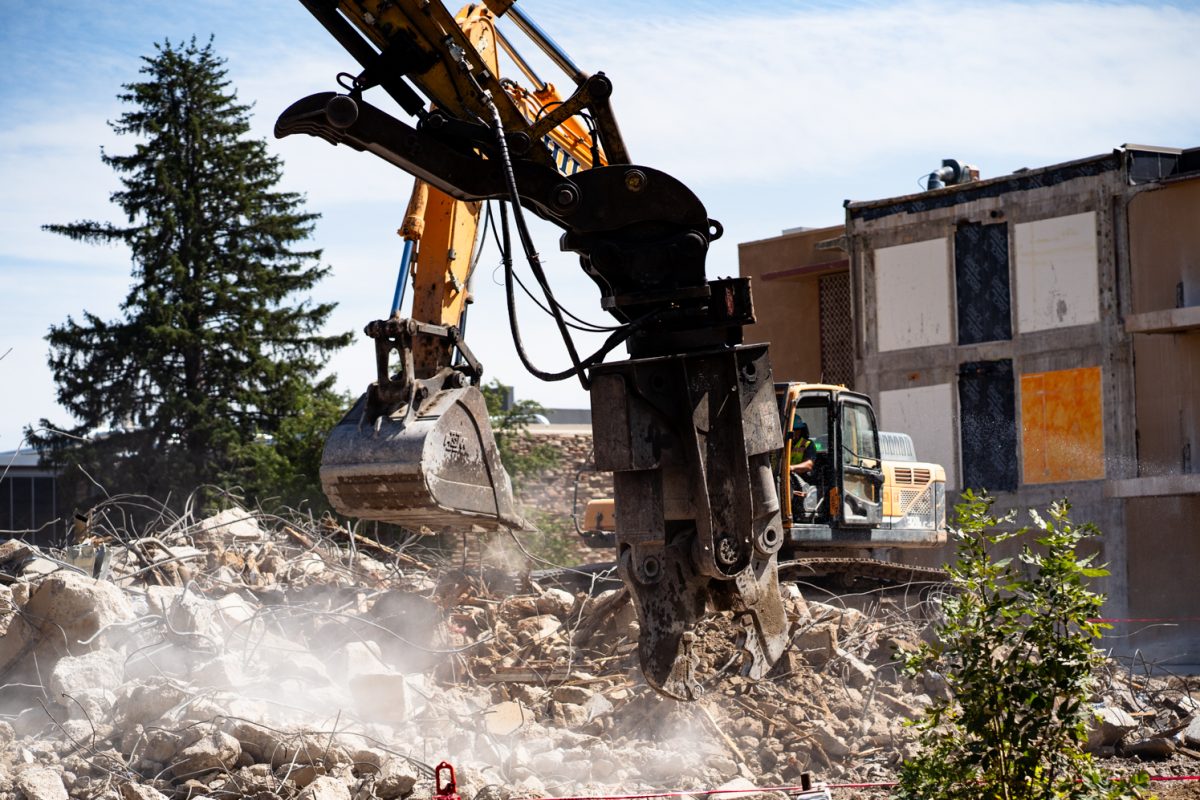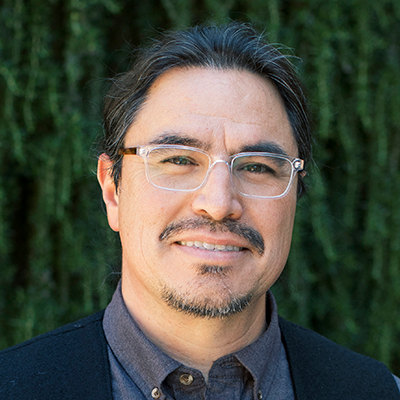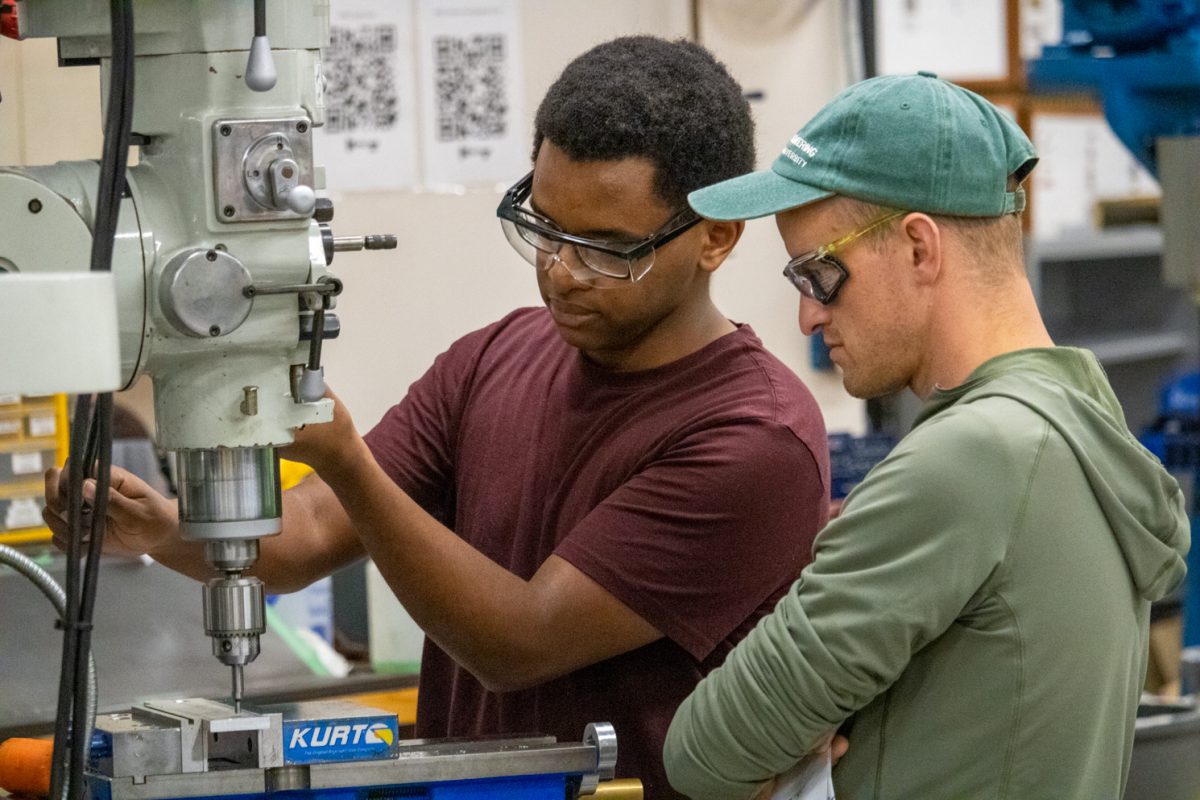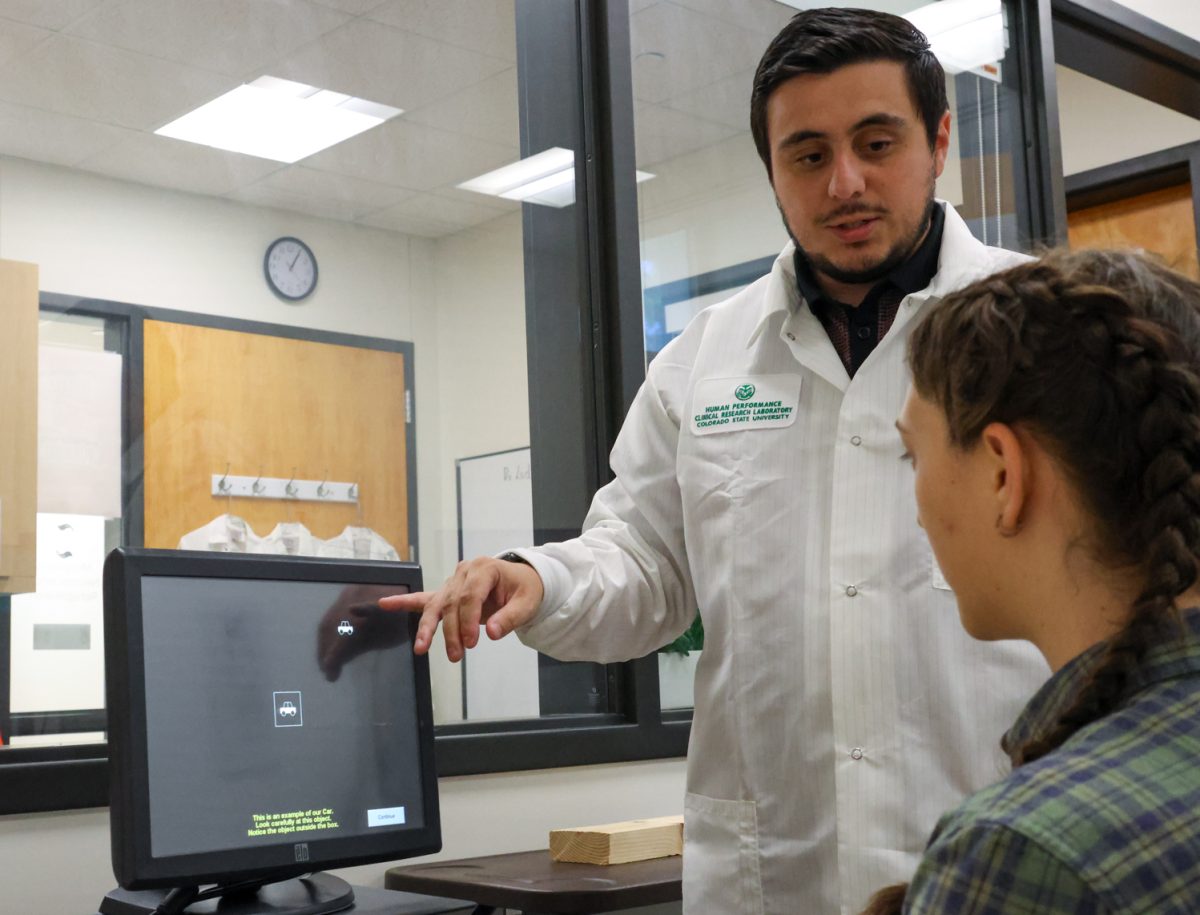With the Clark Revitalization Project in full swing at Colorado State University, one part of the process has been widely discussed around campus: asbestos abatement.
Asbestos is the generic commercial term for six naturally-occuring mineral fibers. Because of these minerals’ unique texture, asbestos was renowned for its natural properties that lent itself to the manufacturing process. The fibers were used in thousands of manufactured products across the U.S. from the late 19th century up to the 1970s.
“There are at least six different types of asbestos that form incredibly thin, hair-like crystals,” Associate Professor Jerry Magloughlin said. “So they have what we call a very high aspect ratio.”
“So the only way that you can liberate or even potentially liberate asbestos fibers from nonfriable material is by pulverizing them to basically dust or powder.” –Eric March, CSU safety and industrial hygiene manager
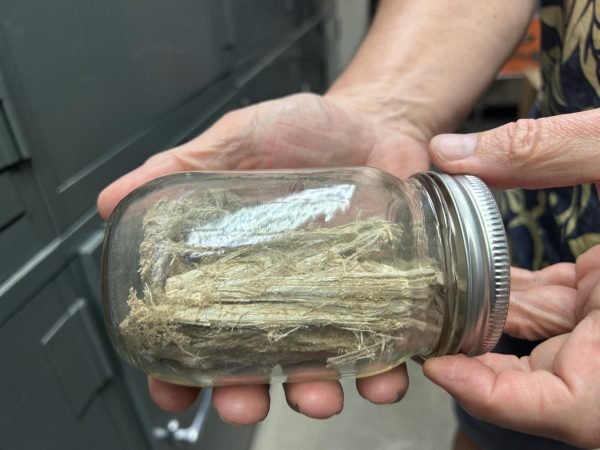
This texture allowed asbestos to be spun and woven like fabric into products, which also made it unable to be burned or dissolved in water. This strength was recognized by manufacturers, who used the texture in insulation, wallboard, plaster, floor tiles and more.
“Asbestos is in our buildings because it has really wonderful properties,” said Associate Professor Ryan Scott, who completed his undergraduate thesis on asbestos public policy. “It’s flame retardant. It’s strong. It has this fibrous property that we can use to enhance materials. We used it for good reasons.”
Use of the material in manufactured goods was banned in 1989, with the Environmental Protection Agency banning new asbestos products from being sold after Aug. 25 of that year. This ban came following the growing evidence of asbestos’s relationship to asbestosis, lung cancer and mesothelioma.
Yet no active health risk is posed to anyone on campus during the demolition of parts of the Andrew G. Clark Building due to the different classifications of asbestos. The material can either appear as friable or nonfriable, which marks the difference between the substance posing a health risk or not, said Eric March, safety and industrial hygiene manager for CSU.
“In Clark, it is a nonfriable material, which means that the asbestos fibers are bound in the matrix of the material,” March said. “It’s kilned, or the mix for the material is baked. It’s formed and pressed, and there’s adhesives that are used. So the only way that you can liberate or even potentially liberate asbestos fibers from nonfriable material is by pulverizing them to basically dust or powder.”
Asbestos only poses a health risk when airborne, as the same fibrous properties that lend to the material’s strength in the manufacturing industry also allow the fibers to become stuck to the lungs when inhaled. These fibers over time can cause issue inflammation and scarring and contribute to mesothelioma, a type of cancer of the thin membranes that line the chest and abdomen, or other lung, larynx or ovarian cancers.
“Friable material means that it can easily be crumbled by hand pressure when it’s dry,” March said. “That’s what you would find on the thermal system insulation and steam tunnels. These are always in nonoccupied areas, and Clark has very little friable material in it.”
While some materials in Clark are considered friable, these materials are not accessible to the student body or faculty.
“Small fittings on the thermal system, the heat exchange system, … are typically above ceilings or in chases,” March said. “Chase is a small area that is covered up or sealed up. It’s not open to the public, and these fittings are in a hard state with a covering on them.”
The nonfriable materials present within Clark at one point included older ceiling and floor tiles as well as mastics, a term meaning any pasty material used as a protective coating or cement. But efforts over the years, even before the revitalization process began, sought to remove these materials, even though there was no present health risk due to their nonfireable, bound nature.
“During the project A Wing, we removed small amounts of floor tile and mastic,” March said. “And there weren’t any ceiling tiles that were asbestos containing in A Wing.”
The B Wing was first abated 15 years ago, a project March oversaw. In it, they removed all asbestos-containing ceiling tiles, fitting for the heating system and adhesive tabs behind heaters. The building was abated again before demolition began, a process with strict oversight and regulation.
“We follow strict regulatory control,” March said. “Colorado Department of Public Health and the EPA have all kinds of regulations on how (asbestos-containing materials) are handled.”
Another form of regulation is the usage of a third-party consultant, who is, as outlined in CSU’s document addressing frequently asked questions regarding asbestos abatement, “retained by the university to ensure that the contractor is performing work per applicable regulations and specifications. They also provide air monitoring and clearance activities.” A consultant from Anser Advisory oversaw Clark’s abatement process.
Furthermore, as per the university’s policy for asbestos reporting, CSU may be fined up to $25,000 per day if ongoing asbestos abatement is performed using improper methods without certified personnel or appropriate permits issued by the state.
Permits throughout the abatement process are also publicly available on the Colorado Department of Public Health and Environment’s public database. Each permit outlines what room and location in Clark the asbestos was removed from the start and end of work dates and times, as well as the amount to be abated down to the square foot and the type of material the asbestos is present in.
Regulations also put forth heavy guidelines to protect abatement workers from exposure, March said.
“Workers wear Tyvek overshoes and negative air-purifying respirators,” March said. “During removal, they use wet methods so that there’s no visible emissions. That’s all done in full containment, which is two sets of containment that are completely sealed with a negative air machine that scrubs the air through a series of multiple HEPA filters.”
Additionally, any contractors who work on the abatement process are specifically trained as per state regulations.
“You’re supposed to have special training,” Scott said. “The state has requirements as far as training programs so that we know people are knowledgeable. There’s (also) training programs for inspectors.”
After the abatement process was finished on the B Wing in July 2024, demolition began Sept. 18. Water was used throughout the process to keep dust down, and no asbestos was present in the wing prior to the demolition, nor was there a public health risk associated with the construction activity.
“All of the asbestos was property abated under permit to any demolition,” March said. “So there were no materials left in B Wing when they abated it that had asbestos in them. It was completely asbestos free prior to demolition.”
Clark’s C Wing is scheduled to undergo remediation and immediate changes but will not be a part of the revitalization project. While some of the ceiling tiles contain nonfriable asbestos, no immediate public health risk is posed to students or staff in the still-operating wing, and improvements have slowly been completed over time.
“Approximately 40% of the lay-in ceiling panels in Clark C Wing contain asbestos,” March said in a follow-up email. “The asbestos content in these ceiling tiles is between 1 and 5%.”
Looking toward the future, while C Wing may not be a part of the Revitalization Project, March is championing for the eventual abatement of the entire building.
“I’ve been here for 28 years, and my goal is to get C Wing abated as soon as funding can be secured,” March said. “I am working towards that. I know there’s a lot of concern, but people need to understand that the concerns in Clark C Wing are very minimal.”
Reach Katie Fisher at science@collegian.com or on Twitter @CSUCollegian.



